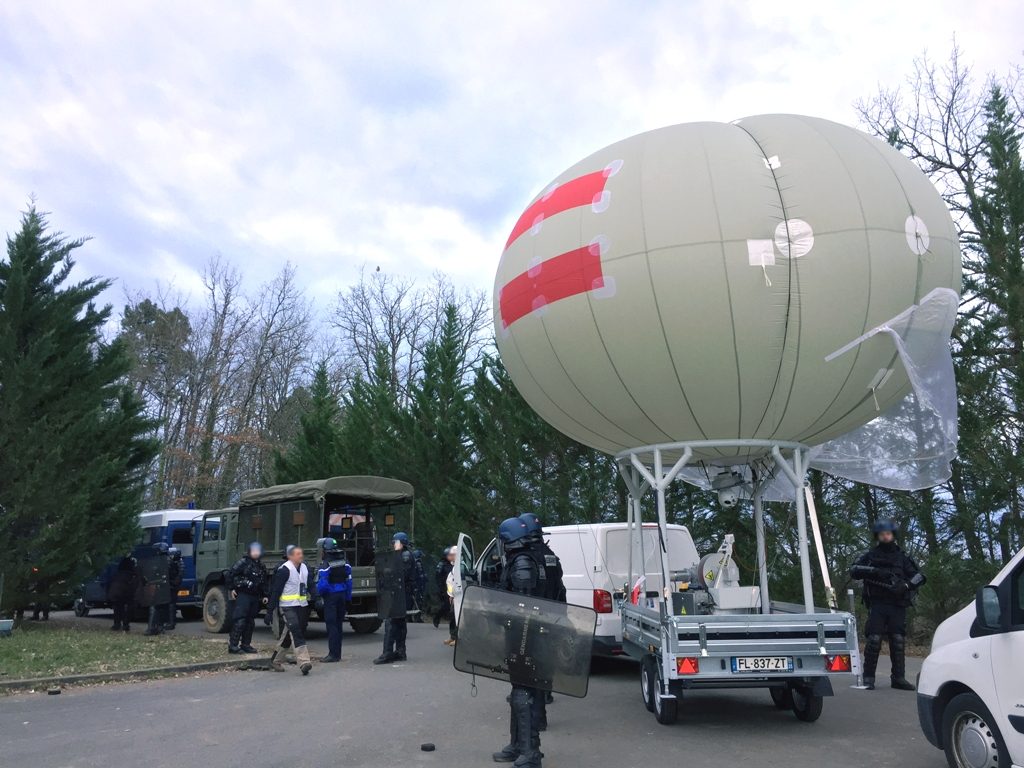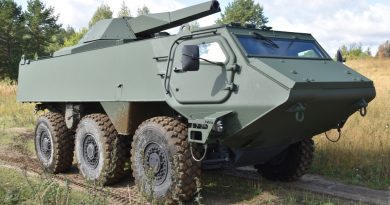
Force protection tethered balloons by CNIM Air Space
In March 2019 the CNIM Group widened its business scope by acquiring Airstar Aerospace, a company with over half-century experience, specialised in tethered aerostats and drone airships, stratospheric balloons and thermal protection for satellites. Based near Toulouse, in south-western France, this has now become CNIM Air Space, a subsidiary to the CNIM Group, attached to the Innovation and Systems sector.
Eurosatory 2020 would have marked the first official appearance of the new CNIM business, offering its tethered balloons portfolio for land force protection use. “The link with CNIM was pretty strong also in the past, as the Toulon-based company was providing one of the tethered aerostats critical elements, the mooring station, while both CNIM and Airstar AeroSpace where partners of Thales Alenia Space in the Stratobus stratospheric airship programme,” Pierre-Laurent Borras, CNIM Air Space Chief Commercial Officer tells EDR On-Line. “While the commercial responsibility remains mostly within the subsidiary, the CNIM Group is key in supporting us in the innovation field, exploiting synergies within the R&D department, and in opening up the military market, thanks to its long-lasting presence in that field and its membership in associations such as the GICAT and the GICAN, related to land and naval defence industries,” Borras adds.
The company expertise in fabrics capable to withstand sun rays for long periods is key to the development of tethered solutions, which typically remain airborne for very long time in order to ensure persistent surveillance around sensible targets, such as i.e. a major military camp of a forward operating base (FOB), definitely one of the typical use of tethered blimps. “At Eurosatory we intended exhibit two of our solutions, the Eagle Owl and the much smaller White Hawk,” CNIM Air Space CCO says.

The former is 19 meters long, with a 7 meters maximum diameter, for an overall volume of 450 m3, and can carry a payload up to 90 kg. “A typical sensor suite would include a radar and an optronic gimballed sensor, our company cooperating with the main manufacturers of those kind of systems,” Borras says. The Eagle Owl can fly at 600 meters over the ground, and withstand winds up to 110 km/h. Flying at around one third of its maximum operational altitude, and considering a flat surface, the balloon sensors would be able to see at over 35 km distance, that is over the double compared to sensors raised on a 30 meters high mast, and in terms of area coverage this means over six times the surface covered by the mast-mounted system. Data transmission between sensors and the ground station is ensured by fibre optics, while the station can provide up to 2 kW electric power for operating the winch, in the deployment/redeployment phase, and sensors once the Eagle Owl is airborne. It takes a maximum of four hours to three operators to deploy and redeploy the balloon, which is stored in a 20 ft container for transport, this being usually installed over a semi-trailer. The logistic footprint is minimal as the Eagle Owl can remain operational for one week without the need to refill its helium reserve.
CNIM Air Space proposes the Eagle Owl for the protection of main operating bases, while for FOBs or even combat outposts persistent surveillance might be provided by the much smaller White Hawk, which has a 4.4 meters diameter and a 3.4 meters height for a 40 m3 volume, and is capable to carry a 5 kg payload at a maximum altitude of 200 meters height. Being smaller it can withstand a 40 km/h wind, while its deployment/redeployment time is much shorter even considering only a two-man crew, operations being carried out in less than 45 minutes. The 220 W power available to the payload, usually an optronic gimballed sensor, is carried by a cable that is also used to carry data, exploiting the Power Line Carrier Communication (PLCC) concept. For transport the whole system can be hosted in a 5 m3 volume, a light off-road vehicle, armoured or unarmoured depending on situation, being thus sufficient. The blimp can remain airborne for five days without need of helium resupply.
Photos courtesy CNIM Air Space



